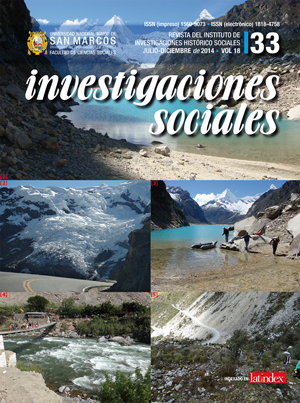Ceremonies and medieval theater in contemporary Peru
DOI:
https://doi.org/10.15381/is.v18i33.10991Keywords:
Ceremony, Theater, Dance, Moros, Christians, Charlemagne.Abstract
The last remnants of the medieval religious drama of Western Europe, as the history of Charlemagne and the Twelve Peers of France, and the War of Spanish Reconquista, were introduced during the domination by the Spaniards to Peru as a means to attain spiritual conquest natural and introduce and teach the Catholic religion. In the seventeenth and eighteenth centuries , the Danza de Moros y Cristianos (as it is called in Peru) becomes a popular dance that will be present in all American civic and religious official festivities will multiply the holidays throughout Spanish America , often only by indigenous natives. From the second half of the seventeenth century artistic representations begin to be exclusively in the hands of Indians and mestizos, emerging new meanings and folk art. Then appear rich mestizo artistic expressions such as cuzqueña painting or dance Moors or Christians.Downloads
Published
Issue
Section
License
Copyright (c) 2014 Luis Cajavilca Navarro

This work is licensed under a Creative Commons Attribution-NonCommercial-ShareAlike 4.0 International License.
AUTHORS RETAIN THEIR RIGHTS:
a. Authors retain their trade mark rights and patent, and also on any process or procedure described in the article.
b. Authors retain their right to share, copy, distribute, perform and publicly communicate their article (eg, to place their article in an institutional repository or publish it in a book), with an acknowledgment of its initial publication in Investigaciones Sociales.
c. Authors retain theirs right to make a subsequent publication of their work, to use the article or any part thereof (eg a compilation of his papers, lecture notes, thesis, or a book), always indicating the source of publication (the originator of the work, journal, volume, number and date).






